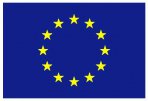Macromolecular Crystallogenesis

Trevor Forsyth, the WP coordinator.
Coordinator: Trevor Forsyth (ILL)
Partners: ILL, ESS, FZJ
Overview
This work package will develop systematic approaches for the characterisation and optimisation of macromolecular crystallogenesis, and apply them to large crystal growth for neutron crystallography. The developments optimise natural and extremely important synergies for crystal growth, and implement crucial step changes in capability for neutron crystallography. Equally important, the developments open key areas of direct (but as yet untapped) interest to industry.
Tasks and Partners
Task 1.1: Development of a robotic system for large crystal growth
Task leader: ILL
The need for automated approaches for large protein crystal growth is obvious given the parameter space that needs to be covered in identifying the correct concentrations, precipitant levels, temperature annealing, and feeding regimes.
We will design prototype robot modules that include temperature control amongst the variable parameters. This will allow thermal cycling to be used for the extension of crystal growth. The modules will also be designed so that as crystals grow, exhausted solutions will be removed and replenished with fresh material having high protein concentration.
By the end of the task, a prototype module will have been developed such that all of these parameters will be controllable through a software interface that can implement a wide range of protocols in a fully automated way, with an integrated microscope system that will allow the collection of time-lapse data on growth rates.
Task 1.2: Development of a flow crystallisation system
Task leader: ILL
A second system for large crystal growth that can be used in a highly controlled way is a flow system. Conceptually, crystals are seeded in an enclosure through which protein solutions are passed very slowly using a nanolitre pump. The protein solution passes through the crystal cell at a rate such that an appropriate equilibrium is set up between what arrives from the pump and what is deposited on the growing crystal. This arrangement has the major advantage that the environment around the crystal is (to a first approximation) stable and that solution shocks, that so often shatter growing crystals when they are fed manually, would be avoided. This type of arrangement could also be implemented in a robotic system but the main emphasis on this task will the elimination of human feeding of the crystal.
Task 2.1: Phase diagram characterisation for proteins
Task leader: ESS
The crystal-solution phase diagram describes quantitatively the behaviour of a crystallization experiment. A variety of devices exist for the optimization of crystal growth based on the phase diagram, but quantitative experimental information on phase diagrams is scarce.
Phase diagrams will be measured experimentally as a function of precipitant concentration, pH, and temperature for a set of proteins. These data will be used to optimize systematically crystal growth conditions based on this phase diagram.
Required for each protein, it is essential to have a platform set up at the ESS for challenging or difficult proteins that have not already been optimized for volume in the user’s home lab. The determination of the phase diagram requires measurement of the protein concentration at the crystal-solution equilibrium at various values of each crystallization parameter (precipitant concentration, pH, temperature). This will be performed in situ in an automated device that combines temperature and chemical composition control with realtime visualisation.
Task 3.1: Phase diagram characterisation for proteins
Task leader: FZJ
This task will focus on characterising and understanding the temperature/precipitant/nucleation issues that are crucial to protein crystallisation and to large protein crystal growth. Using combined static and dynamic light scattering approaches, temperature and precipitant concentration parameters will be used in initiating crystal nucleation using the batch crystallisation method. Using the results from this in-situ static and dynamic light scattering data one can establish solubility pre-crystal forming phase diagrams when changing the temperature at constant precipitant concentration. Repeating this for different precipitant concentrations will yield a complete phase diagram of protein solubility and precrystal formation. The resulting crystal sizes and numbers will be assessed optically, in a manner that will allow crystal size and growth to be correlated with the crystallisation conditions and the static and dynamic light scattering data.
Task 3.2: Application of vapour diffusion approaches
Task leader: FZJ
Vapour diffusion methods will be developed specifically for large crystal growth. The method relies on diffusion of solvent between protein solution and a neighbouring well buffer such that a protein in isotropic solution slowly concentrates and approaches crystallisation. A key aspect of this will be optimising diffusion rates so that crystallisation occurs slowly and predictably.




